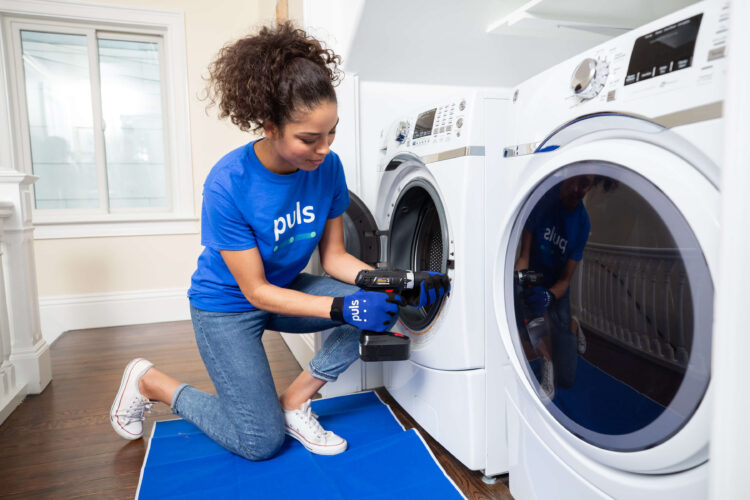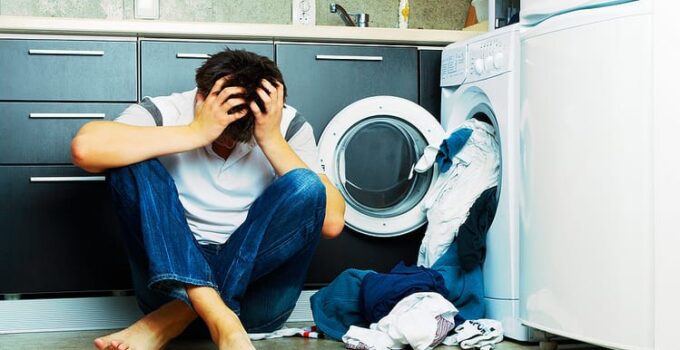There is simply no right moment for a broken washing machine. Whenever you need it the most, it breaks down, but it’s not always easy to know whether it’s a serious malfunction that needs to be in the hands of a savvy professional or whether it’s something you can fix yourself.
The washing machine is one of the main devices that make life easier for homeowners. It is already impossible to imagine life without it, and its breakdown is a nightmare for the whole family, especially if there are children. To fix it is not easy because this requires spare parts, experience and special devices, which simply are not available in any house. In addition, washing machines weigh from 40 kilograms, so the repair of washing machines is carried out mainly at the client’s home. A professional repair service can be provided by appliancerepairexpert.ca, which operates in Canada and delivers a large list of appliance repair and maintenance services.
Or maybe it’s much simpler than we’ve imagined so far.
Many people are reluctant to give the laundry machine a once-over themselves, hoping that the problem can be fixed. Sure – we’re all not experts. But there are some things we can fix in a washing machine ourselves. To give you an overview of what can be done independently and what requires washer repair service, let’s list 5 things that are essential to check before you phone an expert.
- The lint filter. It should always be checked first. This is often the crux of the matter. Larger lint and foreign bodies that had been hiding between the laundry are caught by the lint filter. But small lint particles also accumulate here over time. No wonder that, at some point, it is no longer permeable. Either the washing machine stops completely, or it starts to leak. Cleaning the lint filter, as well as removing foreign objects, will quickly solve this problem.
- The power supply. The plug is inserted, the fuse does not report a fault, and the washing machine indicator lights up? Then the fault is not to be found at this point.
- The drain hose. We all know the problem that a washing machine sometimes “swallows” smaller pieces of clothing, usually socks. This can cause a blockage at various points in the washing machine’s drainage system. So, if the water is not pumped out, it is necessary to look for the cause of the blockage in both the hose and inside the machine. In the outer area, it can be removed independently.
- The inlet hose. It, too, can slip down from the connection once, or it can also be clogged. However, the latter is rather rare, since the inlet is fed by the faucet and thus no foreign bodies can enter.
- The closing mechanism of the door, as well as its seal. A washing machine repair can often be prevented if you check these two components. Especially in the case of the seal, it is not always obvious at first glance that it is no longer completely tight. The cracks can be minimal, and yet the entire system sounds the alarm. Sometimes it is sufficient to replace the gasket. This does not require customer service, only the new seal. As for the door closing mechanism, it depends on the model. Some close with a magnet, which is also quick to replace. Other manufacturers strive for a system that involves replacing the entire door.
As you can see, the first minor faults are quickly found and can be rectified just as quickly. But of course, not everyone is able to independently perform, for example, a bearing change or the replacement of the heating elements. For such a really important repair, it is inevitable to contact a specialized company to repair washing machines.
How much does it cost to repair a washing machine?

Source: blog.puls.com
The most important question is always what exactly is broken. Each replacement part has its exact price. In addition, there is the departure of the technician as well as his working time. In addition, the age of the washing machine also determines the repair price. In this regard, one can roughly make the following recommendation:
- 4 years old and younger: up to 70% of the new price
- 5 – 7 years old machines: up to 55
- 8 – 10 years old machines: up to 35
- Machines older than 10 years: up to 15%.
Of course, this is just a guideline that you can use to check your cost estimates. In this way, you will keep track of your washing machine repair costs.
A washing machine wants to be cared for
Proper installation is one of the guarantees that you will not have to spend a lot of time on washing machine repairs. It is necessary to install the machine either with the help of specialists (which is easier and more reliable) or independently according to the instructions, but it is necessary to have the skills of a plumber and electrician, all the necessary tools, as well as considerable strength and free time. The washer must be properly connected to the cold water supply, sewerage, and electricity, installed on a solid horizontal surface and properly aligned. If everything is done correctly, your device will serve you for many years, and only the drum bearings will require replacement (after about 4-6 years). Simple design washing machines are becoming a thing of the past; modern machines are equipped with an increasing number of auxiliary systems, such as leakage protection, various valves, sensors for vibration, position and drum loading, water level, foam control and many other useful functions. Failure of just a few sensors will lead to the failure of the entire machine, so the repair of washing machines requires high qualification and experience from the master who performs this work.
With regular care, some repair or malfunction can be avoided. For example, the cleaning program should be used once a month. If the machine is hectic, this can be done more often. Use the special cleaning products that are available in stores for this purpose. The better a washing machine is maintained, the less sensitive it becomes to minor malfunctions. And if the wearing parts need to be renewed, that change will also be necessary. After all, you can not get around them.





